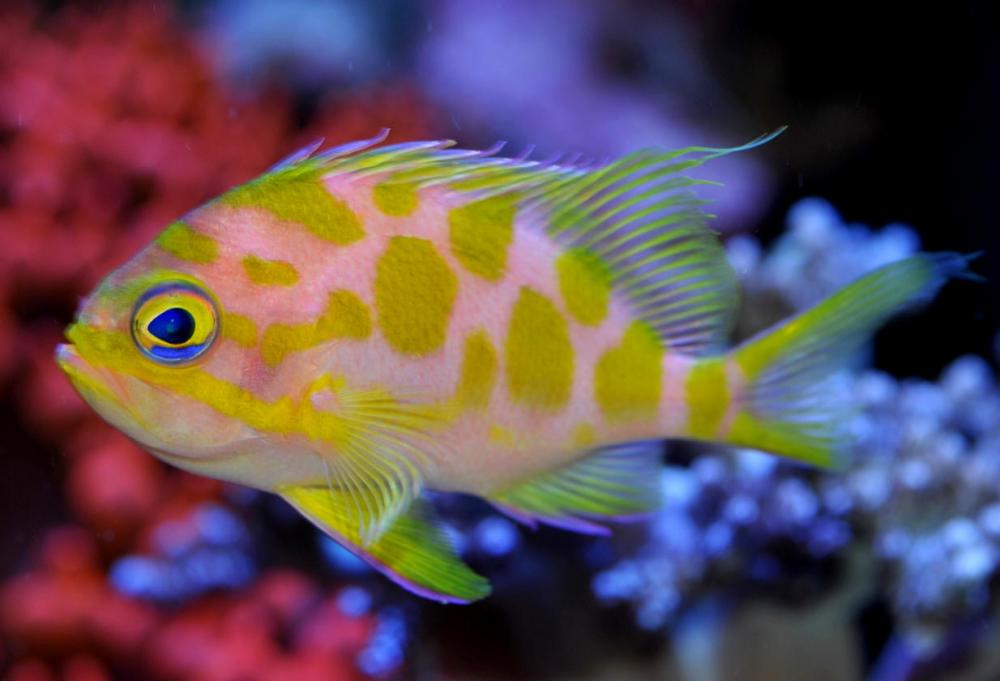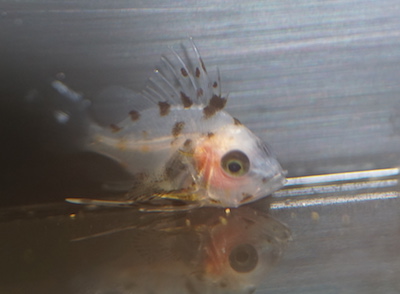I was doing some work on a captive breeding system at Frost Science Museum recently and it dawned on me that we are living in such an exciting time right now. The reefkeeping hobby is improving at a neck breaking pace, and the rate of aquaculture and sustainability of the hobby has gone up exponentially; we are finding success with new fish every few months and not every few years. Very exciting indeed. I was thinking back and one thing that really stood out to me was Biota Aquarium’s crown jewel achievement: their success in rearing and raising one of the holy grail anthias in the hobby, the Borbonius Anthias. Let’s talk about it.
In 2017, Biota Aquariums let out a bombshell during MACNA. Showing off to the world that Biota is serious in its efforts to offer 100% aquacultured and captive bred fish and corals.

Borbonius (Blotched) Anthias (Odontanthias borbonious) is a dream fish that is coveted by many marine fish lovers all around the world. Well known for it’s gorgeous variations of contrasting vibrant colors, patterns on the body and distinctly spiny yet colorful anterior dorsal fin, it’s one of the most highly sought after fish from deeper depths of our oceans. Yes, I said from deeper depths. Just how deep? Unlike many anthias family found in shallower reef, these anthias can be found in 300 to 1000 ft deep. Making them rather rare specimen to obtain and their price to reflect due to that rarity.
In 2016, Tom Bowling, founder of Biota Aquariums, led an expedition team from the California Academy of Sciences in Palau to collect deep water species for display and research in their facility. During this exploration, they were able to capture 14 species of rare specimens, 3 of which were brand new discoveries. As thanks to Tom’s effort, Biota was given a pair of these animals to try and get them to spawn. Tom took them to his nursery and acclimated them to make sure that they adjusted properly to a captive life system. He started to fatten them up and got them used to a variety of food to that they would be healthy and ready.
So how did the magic happen?

It certainly wasn’t planned. They had the fish for about 8 to 9 months when one day the air conditioning system failed and raised the temperature of the system where these the broodstocks were being held to about 80 degrees. The fish are kept in colder water because they are deep water fish, and the sudden rise in temperature caused them to spawn by instinct, resulting in happy accidental aquaculture. Tom was really surprised at this because he thought he would have had to wait another six months or so to get them to spawn. For the first batch, Tom was able to get 80 good eggs and during MACNA 2017, the company unveiled 13 of them that were here in the states, which sent the crowd and industry experts into a wild frenzy.
Looking back and looking at where we are today makes me look forward to what we can achieve in future. We are living in very exciting times indeed!
Check out the original video from MACNA 2017:










0 Comments